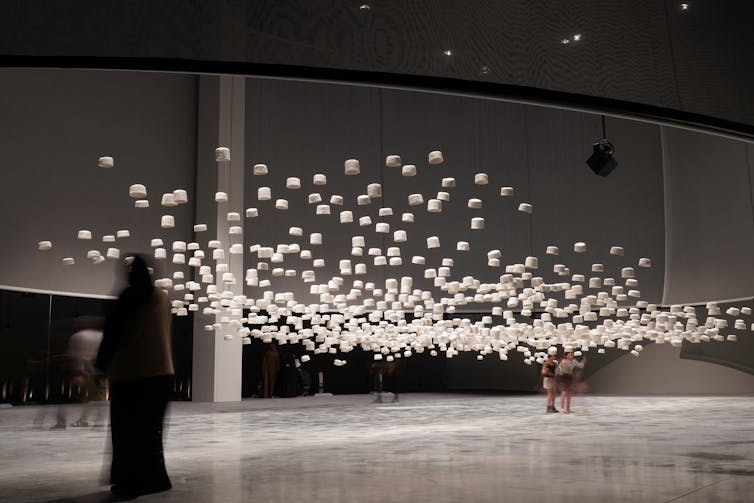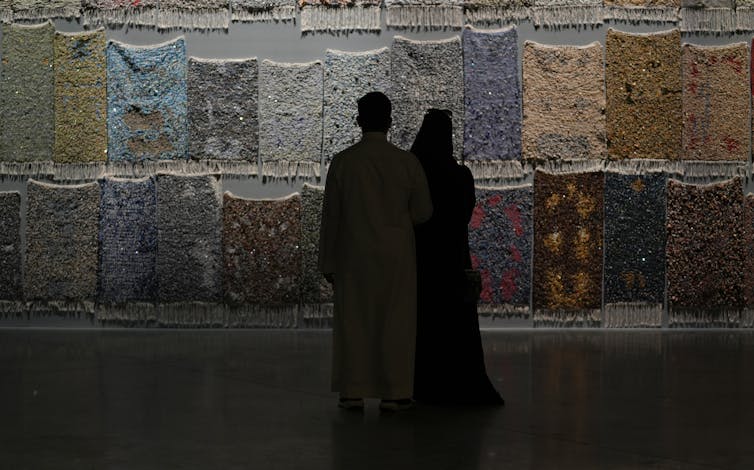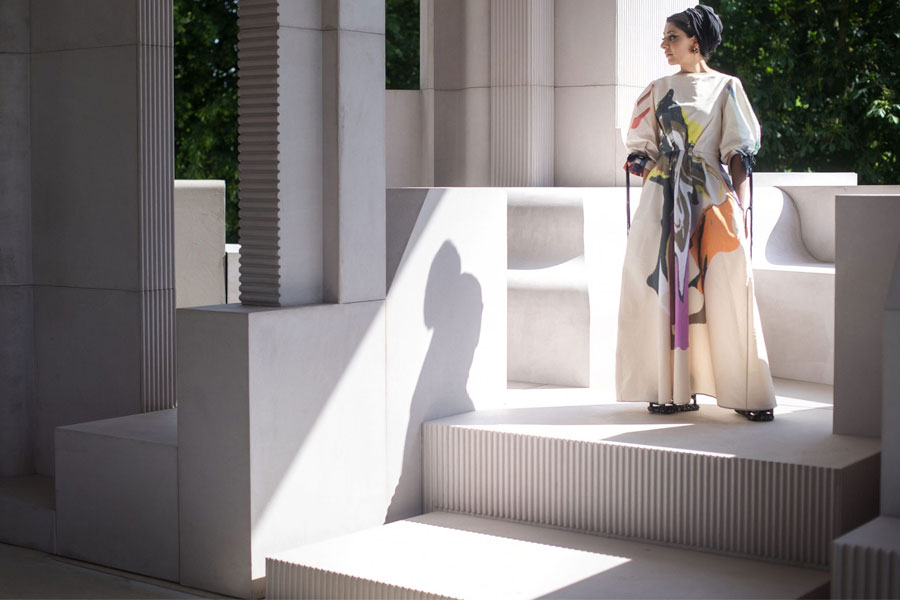The inaugural Islamic Arts Biennale, a large and prestigious international art exhibition is currently underway in Jeddah, Saudi Arabia. The event features numerous African artists and is directed by Sumayya Vally, a South African architecture professor and principal of Counterspace design studio.
Redefining Islamic Art with Sumayya Vally
The field of “Islamic art” was defined by Europeans in the 1800s, and was inherited from definitions outside the faith.
Sumayya Vally hopes that this biennale will put forth a different definition of Islamic arts, one that recognises Islamic philosophies for our present and future, and one that honours the daily lived experiences of the Muslim world.
“It is important that we acknowledge that Islamic faith, Islamic practice, and Islamic tradition can and should be making a creative contribution to the world,” she said.
The Significance for African Artists

Amongst Men by Haroon Gunn-Salie. Image courtesy Diriyah Biennale Foundation
The Islamic Arts Biennale is an opportunity for artists to immerse themselves in work that is expressly Islamic, or rooted in its rituals, philosophies, and practices. In highlighting the diversity of Islamic ways of being, participating African artists contribute to the many notions of what Islam is and can be.
You may also like:
3rd Karachi Biennale KB22: Where Art Meets Technology
A Guided Tour of the Show
Visitors move through a series of exhibits that explore the theme of Awwal Bait, which refers to the reverence and symbolic unity evoked by the Ka’bah in Makkah, the centre of Islamic rituals.
The Biennale is designed to demonstrate that Islamic practice is rooted in collective rituals and experiences of community and belonging.
The show begins in the entrance area of the Hajj Terminal of Jeddah’s King Abdulaziz International Airport, which Sumayya Vally interpreted as a reception area for the world.
It’s the gateway to the hajj, the annual Muslim pilgrimage, and the terminal is able to accommodate up to 80,000 pilgrims. The biennale, contains an array of contemporary and older artefacts associated with those who service pilgrims.
Moving inside, visitors explore the sacred direction (qiblah) to which Muslims point in prayer five times a day, every day of the year.

The focus is on the Ka’aba in Makkah and the construction of daily spiritual belonging. The exhibit moves from a dimly lit room to a brightly lit space, taking viewers on a journey from darkness to light.
It moves up in scale, from the call to prayer, to the scale of the limbs and the body in prayer, to bodies in gathering, both in life and death. The climax of the exhibition is the scale of infinity, the door of the Ka’aba itself.
In the outside space, within the Hijrah (migration) theme of the biennale, the works reflect on the construction of the home and belonging no matter where we are in the world – the building blocks of community created through our rituals of food, sound, festival, time and season, work, worship, memory and imagination.
Highlighting African Works with Sumayya Vally

Salat al-jama’ah by Igshaan Adams. Image courtesy Diriyah Biennale Foundation
South African tapestry artist Igshaan Adams’ piece Salat al-jama’ah explores aspects of politics, race, and religion as they have affected both his personal history and that of his community.
His intricate woven artworks employ a range of natural and synthetic materials and draw inspiration from prayer rugs of different colours and textures.
Moroccan artists Fatiha Zemmouri and Soukaina Aboulaoula’s work, Grammar of the Earth, visualise the sound of prayer through an ochre-coloured painting with sculptural circles raised from its surface.
M’barek Bouhchichi’s Kolona min Torab uses clay and natural pigments from across Morocco to address diversity. Tablet-shaped forms are placed together, each a different shade of black, white, browns, and yellow, forming a vast mosaic.
You may also like:
Pakistani Artist Iman Sara Is The First to Use Mughal Miniatures in Fine Line Tattooing
Share your thoughts with us in the comments below.
Stay tuned to WOW360.
